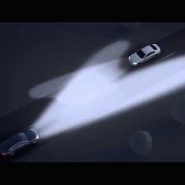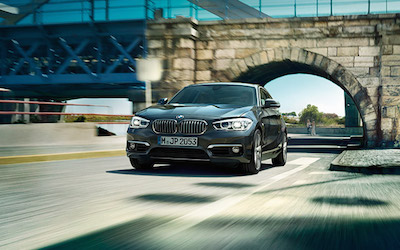German automaker BMW is making slight changes to its High Beam Assist advertisements following a legal ruling.
On July 13, the Advertising Standards Authority (ASA), an independent regulator of United Kingdom media, ruled that a radio ad for the 1 Series with High Beam Assist made a misleading and unverifiable claim. Advertisers walk a fine line between sharing enticing information and exaggerating to a falsehood, however slight.
“Unlike the detailed decisions published by National Advertising Division – the U.S. equivalent of the ASA – ASA decisions tend to be fairly short. Unfortunately, that means that we don’t have a lot to go on,” said Gonzalo Mon, partner at Kelley Drye’s Washington law-firm.
“The question here is how literally consumers interpret the phrase “never dazzled,” he said. “In other words, do consumers understand that to mean 0 percent of the time? The ASA determined that consumers would, indeed, read this as an absolute claim, meaning that there would literally never be a time when drivers were dazzled.”
Never dazzle
BMW vehicles equipped with High Beam Assist include a sensor in the rear view mirror holder at a height similar to the driver’s eyes. When the sensor detects other vehicles, up to 1,000 meters (3,280 feet) ahead for oncoming traffic or 400 meters (1,312 feet) for traffic ahead, it adjusts the light beam automatically, faster than the driver could react and manually adjust the light.
If a vehicle is approaching from a curve, there would be a delay of approximately six-tenths of a second in the lights adjusting. In either case, they claim, the vehicle would be either too far away for the driver to be dazzled, or that the sensor would still react fast enough to present dazzling.
BMW Intelligent Headlight Technology High Beam Assistant
However, a complaint alleged that the claim that “oncoming traffic is never dazzled” could not be substantiated.
The ASA agreed that at a distance of 3,280 feet, oncoming traffic would not be dazzled, but contested there could be a situation where a car emerges from around a bend at a very short distance. In this situation, the delay in the high beam turning off might prove too long to prevent dazzling the other driver.
Because BMW had not proved irrefutably that even on a sharp bend the light would not dazzle other drivers, the ASA upheld the complaint, ruling that the ad breached separate rules regarding misleading advertising, substantiated claims and exaggeration.
BMW is prohibited from running the ad again in its present form and has been advised to ensure future High Beam Assist technology ads do not exaggerate the performance.
Courting controversy
Luxury brands in other sectors also occasionally come under fire for problematic advertisements.
For example, in April, Italian fashion label Gucci became the latest luxury apparel brand to face criticism from the ASA.
A consumer complained about Gucci’s placement of its cruise 2016 campaign on The Times’ Web site on Dec. 15, which featured a dance party video, saying that individual models pictured at the end of the film looked too thin. In its ruling published April 6, the ASA noted that one model was gaunt, deeming the advertising irresponsible (see story).
BMW’s ad was reviewed for a particular claim, and an altered ad will likely contain only slight similarities. Other brands have taken a more deliberate, “all publicity is good publicity” approach.
Fashion brands may skirt controversy in their advertisements as a way to catch consumers’ attention and make an impact, but sometimes these efforts bring public scrutiny.
Recently, ads from Saint Laurent Paris, Miu Miu and Tom Ford have come under fire from the ASA for ads that were deemed to depict unhealthy or indecent scenes. These controversies can help bring a brand into the public eye, but are they more helpful or hurtful (see story)?
“In the U.S., there have been instances in which the NAD has held that companies can make an absolute claim when there are de minimus exceptions, but a lot depends on the context,” Mr. Mon said. “Here, the ASA obviously took a harder stance.
“Obviously, no advertiser likes to be told that they can’t make a certain claim,” he said. “But it’s important to note that the ASA didn’t say that the technology didn’t work. BMW is still able to tout the benefits of technology – they just need to tailor their claim a bit more so that it’s less absolute.”
from
http://redirect.viglink.com?u=http%3A%2F%2Fredirect.viglink.com%2F%3Fu%3Dhttps%253A%252F%252Fwww.luxurydaily.com%252Fbmw-ordered-to-alter-ad-claiming-high-beam-assist-never-dazzles%252F%26key%3Dddaed8f51db7bb1330a6f6de768a69b8&key=ddaed8f51db7bb1330a6f6de768a69b8


No comments:
Post a Comment